- Home
- Alison Weir
Mary Boleyn: The Great and Infamous Whore Page 10
Mary Boleyn: The Great and Infamous Whore Read online
Page 10
For example, it has been asserted that Mary’s “first venture into the wider world and the dazzling experience of the French court went to her head”;9 that she “was so liberal with her favors that she acquired a very unsavory reputation,”10 “on both sides of the Channel, for sleeping with anyone.”11 These, and many more claims of a similar nature, are dubious assumptions—because, according to the historical evidence, Mary never incurred notoriety or infamy as a royal mistress.
Pio was demonstrably not the most accurate of sources, often treating gossip as fact; for example, the information he was to relay about the arrest of Anne Boleyn in 1536 was incorrect; and he was the originator of the notorious story that Henry VIII lay unconscious for two hours after a fall from a horse that year,12 a tale that was uncorroborated by any observer in England, but is still widely believed today, even by some historians, who have constructed elaborate theories about this concussion being responsible for brain damage that would explain the King’s “sudden” change of character and later cruelties.
As the Pope’s official representative, Pio was naturally inclined to vilify the antipapal Boleyns, especially in 1536, after Henry VIII’s break with Rome and Anne Boleyn’s elevation to queenship. Pio’s letter was written only six weeks after Katherine of Aragon’s funeral and Anne Boleyn’s final miscarriage (which occurred on the same day, January 29), and his comments about Mary were made after he averred incorrectly that Anne—“that woman”—had only pretended to be pregnant and had faked her miscarriage. He did not scruple, therefore, to make disparaging remarks about Mary, whom he—again incorrectly—supposed to have been the only lady in attendance on her sister during her premature confinement, in order to abet Anne in her deception and preserve secrecy. No other commentator records Mary’s presence on that tragic occasion, and it is doubtful she was even in England at the time.
We might wonder if this statement that François I had known Mary for a great whore is as suspect as others made by Pio, yet the inaccuracies in his reports lie chiefly in his accounts of events in England, which were evidently based on garbled hearsay and rumor. He was actually present at the French court, so had access to more reliable information, and the ear of the King, so we cannot lightly dismiss what he wrote. Yet he did not specifically state that François himself had described Mary as a great and infamous whore—although many modern writers13 have assumed that the King actually called her that—only that he knew her as one.
This ambiguous wording might imply that the King merely had knowledge of her being free with her favors, yet it seems odd for Pio to have singled out only François for knowing this, when certainly—if it were true—other people must have known it too; and if he had intended that meaning, he would surely have written that Mary was known to be a great whore. No, the word “knew” is almost certainly meant in the biblical sense here, and it is used to show that François knew Mary as a whore, rather than as a maîtresse-en-titre. How Pio discovered this is unclear; it could well have come from King François himself, speaking man-to-man of the moral shortcomings of the Boleyns; or Pio could have heard it from any number of people at court. The fact that a minor matter for scandal dating from more than two decades before was brought up at all suggests that there was some substance to the allegation. What is surprising is that Pio does not mention Mary’s later relations with Henry VIII; clearly he did not know about them, which shows that that liaison was never notorious either. Instead, he derided her for an earlier affair that must have been of much shorter duration, but—far from conferring infamy on Mary—was of such little consequence that no other source mentions it.
It does not seem likely that François I—an experienced libertine and notorious womanizer—would have called Mary “a very great whore, and infamous above all.” That was certainly saying something, for the French court was reputed to be the most scandalous in Christendom.14 If Mary’s reputation had been that notorious, we would have other reports of it. What could this young girl have done to shock such a seasoned man of the world as the French king? Only weeks before, her mistress, Mary Tudor, had been complaining about her young attendants’ lack of experience and knowledge of the world. Had Mary, in such a short time, become practiced enough at lechery to merit such a scathing insult? It seems unlikely.
By March 1536, although François had long been a friend to Anne and her faction, his good relations with Henry VIII had become frosty, and the latter was leaning toward an alliance with France’s enemy, the Emperor Charles V. At the time Pio wrote his report, François would not have been well disposed toward his English rival. Moreover, Anne had miscarried a son, and her future now seemed uncertain. One might suspect that, in this political climate, François felt at liberty to denigrate the Boleyns, and that he might have grossly exaggerated what he remembered of Mary. Yet the French court historian Brantôme states that “King François, who was very fond of the ladies [although he was convinced that they are most changeable and fickle], never would have any slandering of them at his court, but insisted on their being accorded great honor and respect.” It is unlikely, then, that he would have spoken so unchivalrously of Mary.
It seems therefore that the zealous Pio, who, as the Pope’s spokesman, hated everything that the Boleyns stood for, was reporting what he had been told in private by the French king or someone else in the know, and himself exaggerated it to score a political point; and that the description of Mary as an infamous whore comes from Pio, placing his own construction on Mary’s conduct, and not from François I.
This theory effectively demolishes a reader’s thoughtful suggestion that François’s cruel jibe about Mary was made because she had actually spurned his advances. That she did so, at least to begin with, is certainly possible, given that, later on, she seems to have surrendered to Henry VIII against her will. It has also been suggested that Pio’s remark of 1536 was based on what François had learned, during Henry’s visit to Calais in 1532 (when he was accompanied by both Boleyn sisters), of Mary’s affair with the English king15—but Pio did not mention this, as might be expected if that were the case; or that a jealous François had been angered to hear that Mary had taken up with his rival, Henry VIII,16 although this does not take account of the years that had elapsed between the two liaisons. Had François been so enamored of Mary, he could easily have arranged for her to stay on at the French court after 1515, yet there is no record of her there, while there is plenty of evidence for his other affairs—even short-lived ones.
The complete absence of any corroborative contemporary evidence to support the claim that Mary was the most infamous of whores fatally undermines Pio’s statement—and all the modern myths about her reputation. There is no other proof whatsoever that Mary Boleyn “quickly adapted to the immoral atmosphere” of the French court,17 or that she soon learned to enjoy “sexual dalliance,”18 or became very free with her favors and adventurous in bed. She has been seen as “an inviting, eager girl, ripe and nubile”19 whose “youth, beauty, and inexperience led her into a series of short-lived encounters as she was passed from the King, who quickly tired of her, to his favorites,”20 while jumping into bed with François and his cronies “seemed to her to be a dazzling career of advancement.”21 There is no evidence to support any of this. One writer has even fantasized about Mary becoming “an adept at those Paris refinements which, while they scandalize, are irresistible to the most virtuous of men. Her heart was generous, her body responsive. At Fontainebleau, at Amboise, she had refused no one.”22 Small matter that Mary is not known to have visited Fontainebleau and never traveled as far south as the Loire Valley.
This same writer accused Mary’s parents of abandoning her to “the vicissitudes of foreign courts” where she could not protect herself from men,23 when in fact Sir Thomas Boleyn was affording his daughter the best opportunity of advancement and a good marriage in placing her in Mary Tudor’s train. It has been said he had cared little that, in sending his daughters to France, he had exposed them to the most l
icentious court in Europe,24 but presumably he had trusted to their youth, their training, and Queen Mary’s protection. As for the unsubstantiated assertion that he was the first to criticize when word of Mary’s “many affairs” got back to England25—what “many affairs,” one might ask? The worst that could be said, on the evidence we have, is that Mary had a brief liaison with François I. The rest is pure imagination.
There is a modern perception, though, that her reputation was soon such that she was “known to be at everyone’s disposal. Even at the lascivious French court, there was a code of discretion; Mary had offended it. She was either sent or withdrawn hastily to England.”26 It has been imagined that, after being quickly discarded by François I, Mary was “laughed at by courtiers,”27 that this “warmhearted and ductile girl made the mistake of scattering her favors too widely and making her affairs too public”28 and that she would return to England “with a colorful reputation for wanton behavior.”29 Again, all this is supposition.
In fact, Mary’s liaisons with François I and later with Henry VIII were conducted so discreetly that not a single comment was made about them at the time. François I, as we have seen, was notorious for his amours. From 1518 his maîtresses-en-titre would preside publicly over his court, attracting much comment. In an era in which few courtiers commissioned portraits of themselves—the number painted by Jean Clouet, for example, was modest—several of these mistresses had theirs done to mark their elevation to the royal bed, among them Françoise de Foix, Dame de Châteaubriant; Marie de Langeac, Dame de Lestraunge; Marie de Macy, Dame de Montchenu; Anne d’Heilly, Duchess d’Étampes; and Marie d’Assigny, Dame de Canaples.30 Had Mary Boleyn been of any significance in the King’s life, there would surely have been some evidence of it. But clearly she was not.
Her affair with François was probably so brief and covert that we might not expect to find a record of it; but there is also no contemporary record of her behaving in such a manner as to incur notoriety or gain a reputation for promiscuity—when there certainly would have been if she was conducting herself so immorally as to earn for herself the dubious distinction of being known as the most infamous whore at the licentious French court. It was acceptable for men to indulge themselves in this way; but in a young, unmarried woman of good birth, it would have been worthy of comment, Furthermore, such conduct would have reflected badly on Mary Tudor, who was responsible for the moral welfare of her female attendants—as Louis XII had been well aware when he dismissed Jane Popincourt from her service.
Pio does not reveal when François and Mary had briefly been lovers, but his statement, written in Paris, that the King “knew her here in France,” must surely indicate that it happened when Mary was at the French court in 1514–15,31 as most writers32 have concluded. There is no evidence, however, to back up the statement that, because of her promiscuity, Mary was dismissed from Queen Claude’s service in 1519.33
It has also been suggested that the affair could have flourished during Mary’s two later sojourns in France: at the meeting of the English and French courts known as the Field of Cloth of Gold in 1520, or during Henry VIII’s visit to Calais in 1532, when she accompanied her sister Anne and met with King François.34 Yet in 1520, Mary was newly married, in the train of the virtuous Queen Katherine, and accompanied by her parents and her aunt. It would not have been easy, in such circumstances, to have indulged in a secret affair with the King of France, given the extensive interest that attended the Field of Cloth of Gold, that very public event. In 1532, Calais was an English possession and not part of France, so it is hardly likely that Pio was referring to Mary having an affair with François there: Calais was not “here in France.” Nor is François likely to have uttered his disparaging remarks about Mary’s virtue at this meeting,35 as they were not reported by Pio until three and a half years later, and in very different circumstances.
When, in 1514–15, might this affair with King François have occurred? Circumstantial evidence might suggest that it was toward the end of that period. It has been said that the liaison was going on for a few brief “months” in 1515,36 but that is pure guesswork, and had it lasted that long, it might have attracted interest or comment. In 1515, François’s favored mistress was a beautiful Parisian called Jeanne le Coq, whom he visited by night, accessing her house in Paris through a neighboring monastery; but that is not to say he had renounced other women. There had been opportunities for his affair with Mary to flourish in the three months of Mary Tudor’s queenship, and he could also have pursued her during his visits to the Hôtel de Cluny, or wherever she was lodging after she had been temporarily dismissed from the Dowager Queen’s household. It has been surmised that Queen Mary’s example in marrying for love indecently soon after her husband’s death “gave her namesake carte blanche to behave in a similar manner”37—but the two cases do not bear comparison, and it is unlikely that Mary Boleyn was more than infatuated with her royal pursuer.
More credibly, the affair could have happened after Mary Tudor left the seclusion of her chamber at the Hôtel de Cluny and returned to Paris, where, on February 13, she watched from an upstairs window as the new king made his state entry into his capital, and later attended the celebratory banquet. It has even been claimed that the affair took place when Mary Boleyn was supposedly in the service of Queen Claude38—which she never was.
Everything points to her affair with François having been “extremely brief,”39—a heat-of-the-moment episode or one-night stand, even—and there is no evidence at all that, when François “soon tired” of Mary, he “passed her on to his courtiers,”40 nor that this “shocked” or “frightened” Anne [Boleyn].41 And it may be unsafe to assert that it was probably at this point that Anne discovered “how women really could be exploited and mistreated, that she decided to protect her greatest asset, her purity, at all costs”;42 for Anne herself, as we will presently discover, had been “corrupted” at the French court.43
We might infer from Anne Boleyn’s speedy preferment at the French court—it was she who was appointed a maid of honor to Queen Claude, a highly sought-after position—that she was the cleverer and more charming of the Boleyn girls, the one thought most fit for the high honor of serving first the Archduchess Margaret and then the Queen of France and, later, the French king’s sister; and that Mary Boleyn was less accomplished and able, and therefore somewhat in her younger sister’s shadow—in the eyes of her family at least. That may be true, and if so, Sir Thomas Boleyn’s disappointment in his elder daughter would surely have been compounded by finding out that she had lost her virtue to the King of France and—as if that was not bad enough—had not received in return any tangible benefits such as a financial reward or even an honorable marriage.
It makes sense of the later events and course of Mary’s life to assume that her family did find out what had passed between her and François I. It is unlikely that Mary herself told them—what girl of gentle birth would confess to compromising her honor, unless there were to be consequences that had to be dealt with discreetly? We don’t, of course, know that there were not, and it would be fruitless to speculate; but for the rest of her life, as will become clear, there is intermittent evidence to suggest that Mary was held in little account or affection by her family; and one gets a sense that she was a continuing disappointment to her “outstandingly learned” father,44 and probably to the rest of the family too.
It would make sense that Mary Tudor also knew about her maid of honor’s fall from grace—and that she found out toward the end of her sojourn in France. Someone in her household—Madame d’Aumont, possibly, whose duty it was to be vigilant in all matters concerning the conduct of her charges—might easily have noticed something amiss, and may even have tackled the girl, forcing a confession. The matter would then have been reported to Queen Mary, who, responsible as she was for the moral welfare of the young ladies in her household, would have been duty bound to write to Sir Thomas Boleyn. Discretion would have been essential, given th
e recent scandal of Mary Tudor’s marriage to the Duke of Suffolk, and we might imagine that that lady was not best pleased to learn that Mary Boleyn had risked linking her to further scandal. This is all informed speculation, of course, but it is credible because it provides an explanation for subsequent events—and for the Boleyn family’s antipathy toward Mary.
Her parents’ evident disapproval—their dislike, even—may well have dated from this time.45 Even Anne Boleyn, who conceivably was taken into Mary’s confidence, and would have surely known the reason for her sister’s disgrace—may have shared their feelings. As far as the family were concerned, there was good reason for their disapproval, and Sir Thomas Boleyn may have felt compelled to act upon it, as will be discussed shortly. He could not allow Mary to remain where she was; her very presence in the Queen Dowager’s household was compromising to that lady, and besides, he was probably of the opinion that his daughter needed to be taught a lesson.
What does all this tell us about Mary? The myth of her “extremely wanton reputation”46 has predictably colored historians’ assessments of her character.
Some see her as a generous, amiable, easygoing, warmhearted but not very clever person,47 or “an obliging if colorless girl,”48 but that view presupposes that she fell willingly into royal beds. It has even been said that her reputation “was gone before she reached seventeen,”49 and that her character was therefore “beyond rescue.” Even so, she was “a not altogether unamiable personality.”50 She has been described as “pretty but insipid,”51 “eager to please and generous,”52 and “charming and agreeable.”53
One author writes of her “docility,”54 where another sees her as “a high-spirited, rather giddy girl who enjoyed all the pleasures of the court on offer.”55 She has been called “racy,”56 and it has been suggested that “the air of innocence her Rubens-like coloring gave her hid a nature passionate, responsive, thoughtless, and weak”; she was “sexually pliant” and almost certainly “did not possess the stubborn spirit and bad temper of her sister.”57

 Richard III and the Princes in the Tower
Richard III and the Princes in the Tower Britain's Royal Families: The Complete Genealogy
Britain's Royal Families: The Complete Genealogy The Lady in the Tower: The Fall of Anne Boleyn
The Lady in the Tower: The Fall of Anne Boleyn Six Wives of Henry VIII
Six Wives of Henry VIII Elizabeth of York: A Tudor Queen and Her World
Elizabeth of York: A Tudor Queen and Her World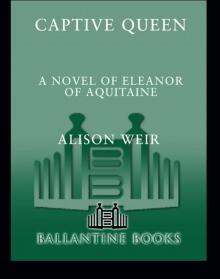 Captive Queen
Captive Queen Innocent Traitor
Innocent Traitor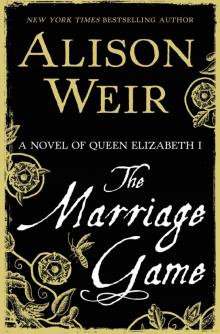 The Marriage Game
The Marriage Game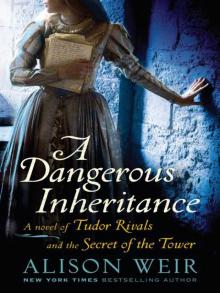 A Dangerous Inheritance
A Dangerous Inheritance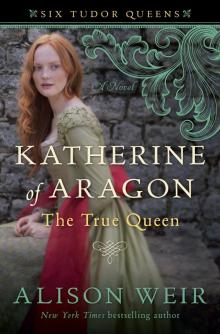 Katherine of Aragón: The True Queen
Katherine of Aragón: The True Queen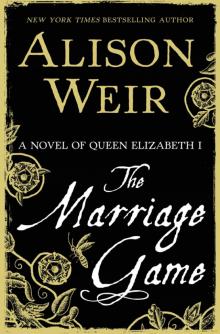 The Marriage Game: A Novel of Queen Elizabeth I
The Marriage Game: A Novel of Queen Elizabeth I Princes in the Tower
Princes in the Tower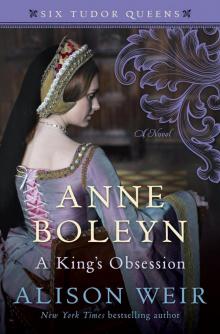 Anne Boleyn: A King's Obsession
Anne Boleyn: A King's Obsession Traitors of the Tower
Traitors of the Tower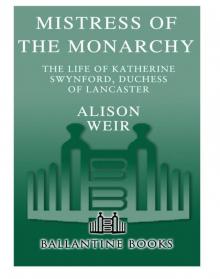 Mistress of the Monarchy: The Life of Katherine Swynford, Duchess of Lancaster
Mistress of the Monarchy: The Life of Katherine Swynford, Duchess of Lancaster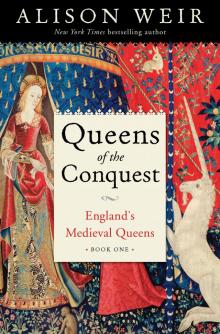 Queens of the Conquest: England’s Medieval Queens
Queens of the Conquest: England’s Medieval Queens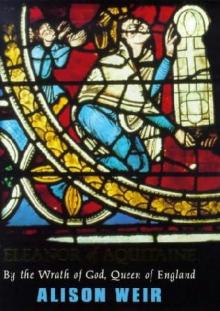 Eleanor of Aquitaine: A Life
Eleanor of Aquitaine: A Life Mary, Queen of Scots, and the Murder of Lord Darnley
Mary, Queen of Scots, and the Murder of Lord Darnley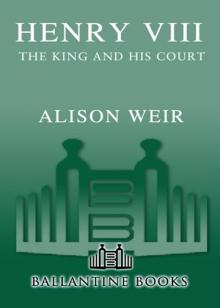 Henry VIII: The King and His Court
Henry VIII: The King and His Court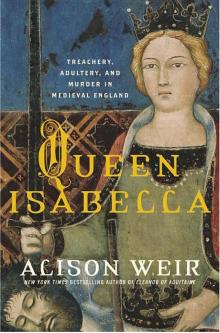 Queen Isabella: Treachery, Adultery, and Murder in Medieval England
Queen Isabella: Treachery, Adultery, and Murder in Medieval England Katheryn Howard, the Scandalous Queen
Katheryn Howard, the Scandalous Queen Arthur- Prince of the Roses
Arthur- Prince of the Roses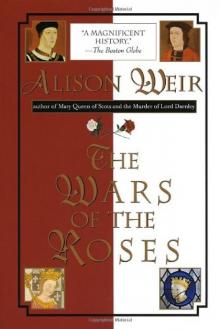 The Wars of the Roses
The Wars of the Roses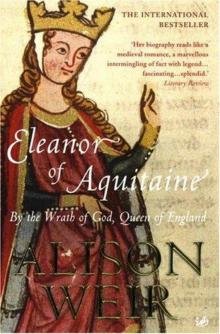 Eleanor of Aquitaine: By the Wrath of God, Queen of England
Eleanor of Aquitaine: By the Wrath of God, Queen of England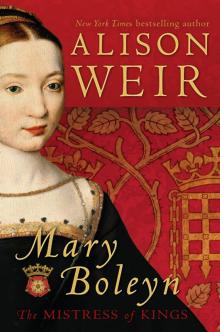 Mary Boleyn: The Great and Infamous Whore
Mary Boleyn: The Great and Infamous Whore Jane Seymour: The Haunted Queen
Jane Seymour: The Haunted Queen Anna of Kleve, the Princess in the Portrait
Anna of Kleve, the Princess in the Portrait Lancaster and York: The Wars of the Roses
Lancaster and York: The Wars of the Roses The Grandmother's Tale
The Grandmother's Tale The Princess of Scotland (Six Tudor Queens #5.5)
The Princess of Scotland (Six Tudor Queens #5.5)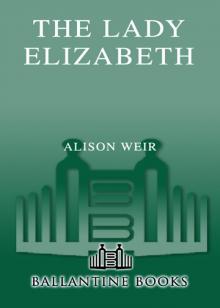 The Lady Elizabeth
The Lady Elizabeth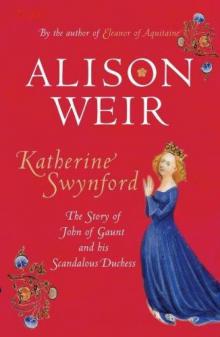 Katherine Swynford: The Story of John of Gaunt and His Scandalous Duchess
Katherine Swynford: The Story of John of Gaunt and His Scandalous Duchess The Curse of the Hungerfords
The Curse of the Hungerfords The Lost Tudor Princess: The Life of Lady Margaret Douglas
The Lost Tudor Princess: The Life of Lady Margaret Douglas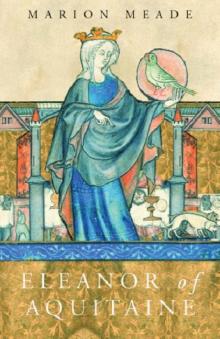 Eleanor of Aquitaine
Eleanor of Aquitaine Mistress of the Monarchy
Mistress of the Monarchy The Lost Tudor Princess
The Lost Tudor Princess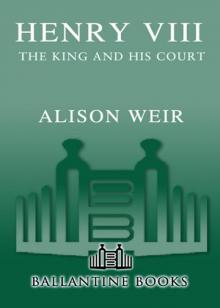 Henry VIII
Henry VIII Anne Boleyn, a King's Obsession
Anne Boleyn, a King's Obsession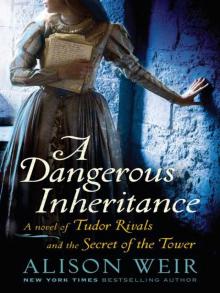 A Dangerous Inheritance: A Novel of Tudor Rivals and the Secret of the Tower
A Dangerous Inheritance: A Novel of Tudor Rivals and the Secret of the Tower Elizabeth of York
Elizabeth of York Katherine of Aragon, the True Queen
Katherine of Aragon, the True Queen Katherine Swynford
Katherine Swynford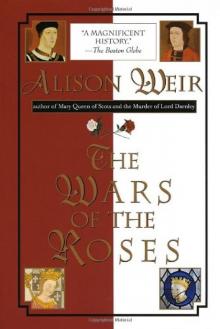 Wars of the Roses
Wars of the Roses Queens of the Conquest
Queens of the Conquest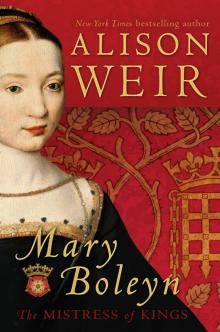 Mary Boleyn
Mary Boleyn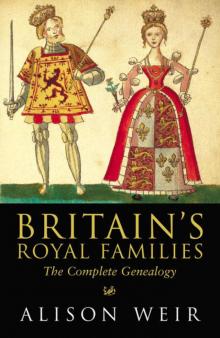 Britain's Royal Families
Britain's Royal Families The Tower Is Full of Ghosts Today
The Tower Is Full of Ghosts Today Life of Elizabeth I
Life of Elizabeth I Anne Boleyn A King's Obssession
Anne Boleyn A King's Obssession Lancaster and York
Lancaster and York Jane Seymour, the Haunted Queen
Jane Seymour, the Haunted Queen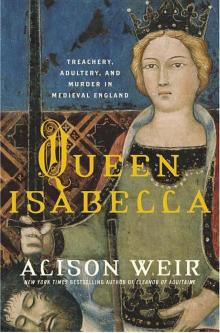 Queen Isabella
Queen Isabella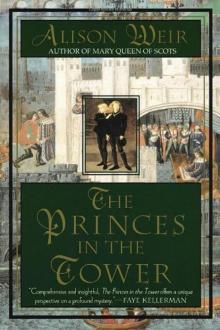 The princes in the tower
The princes in the tower